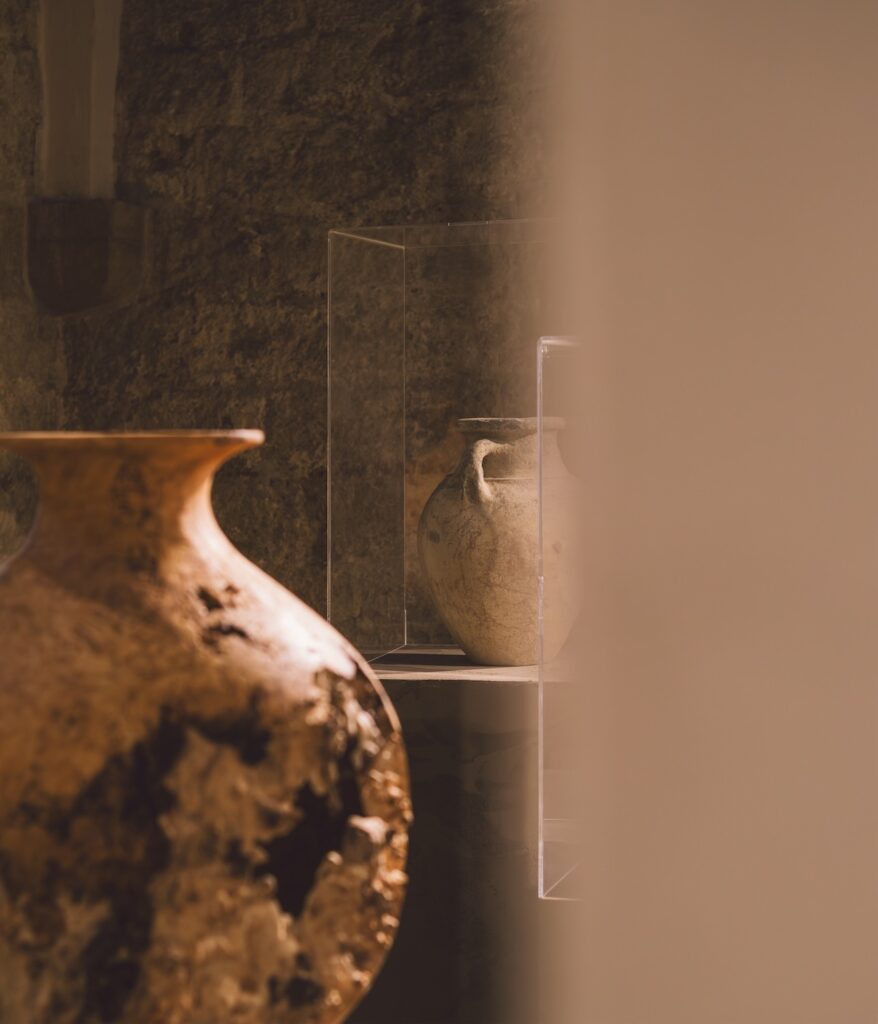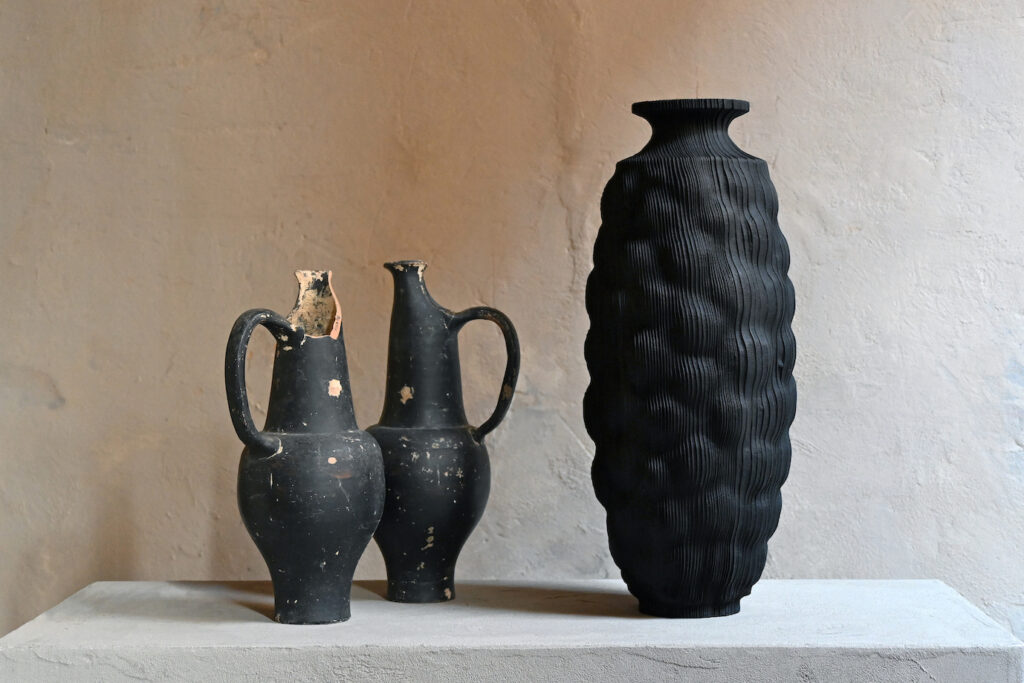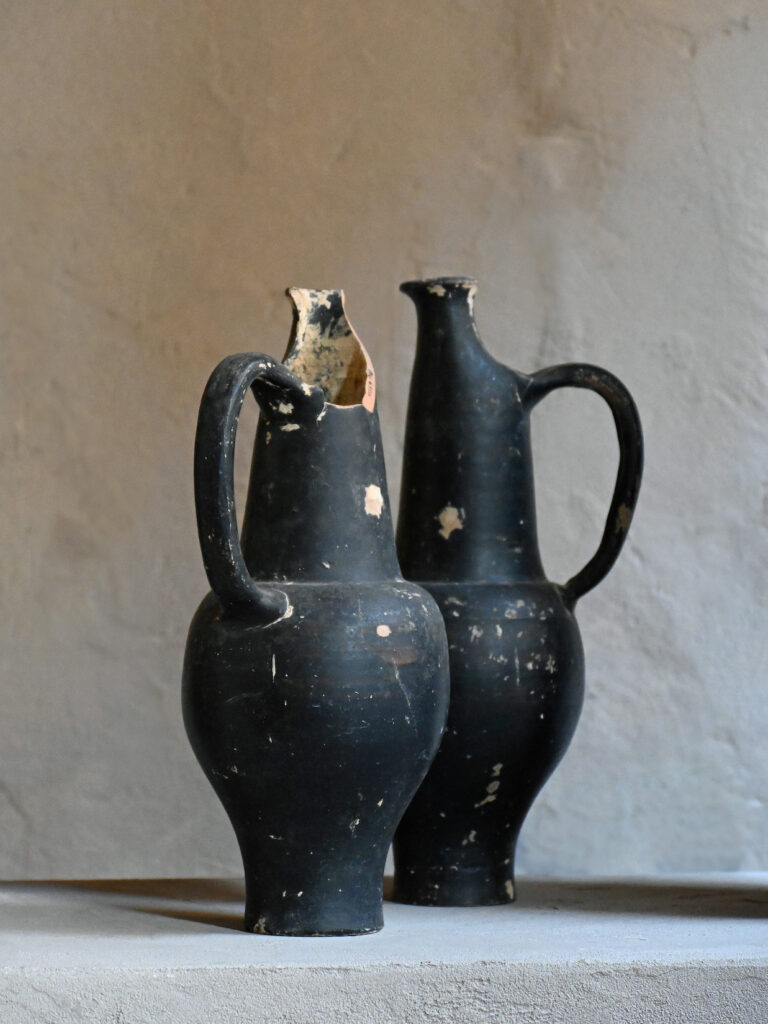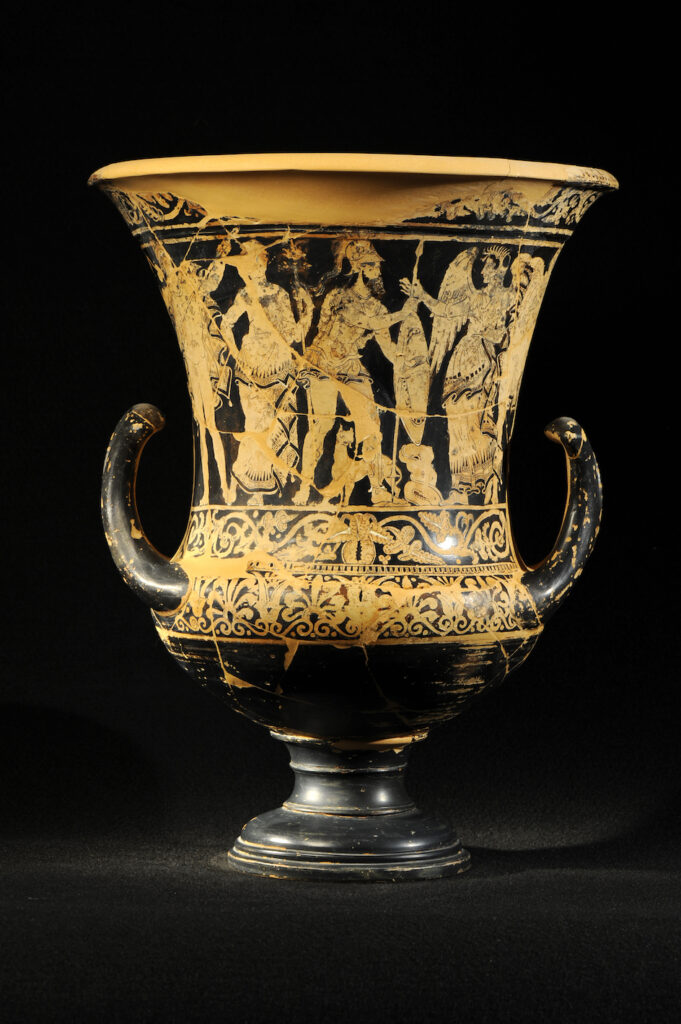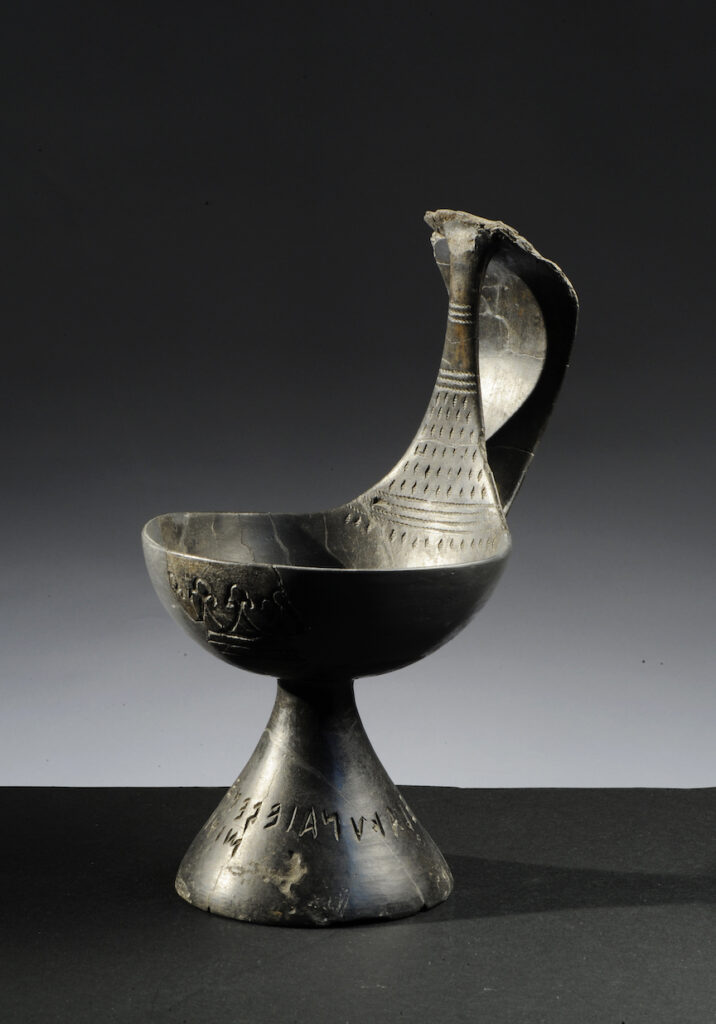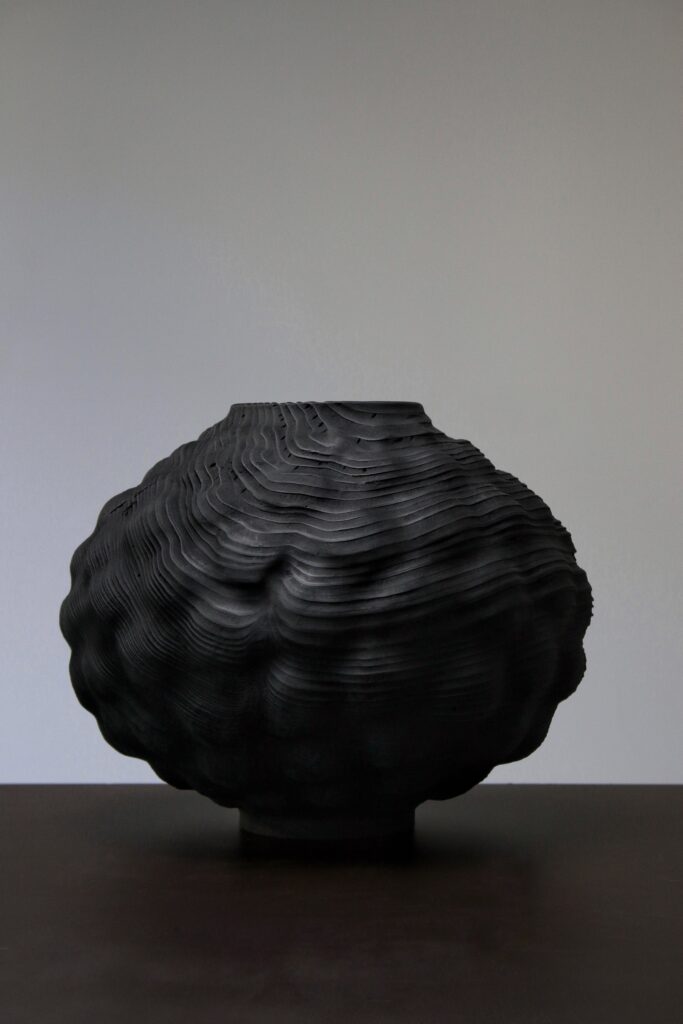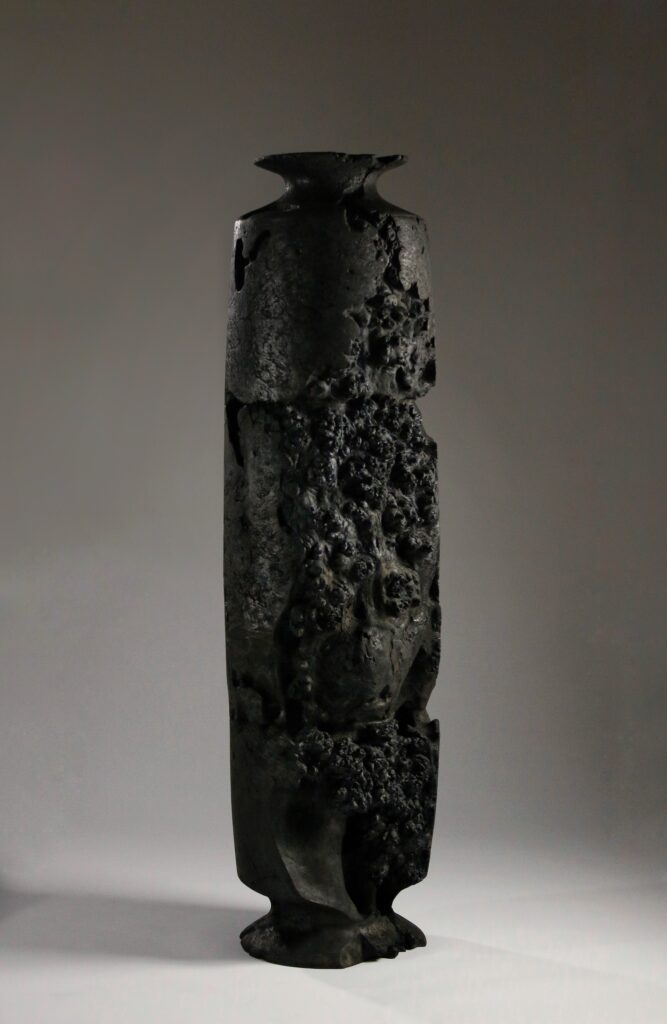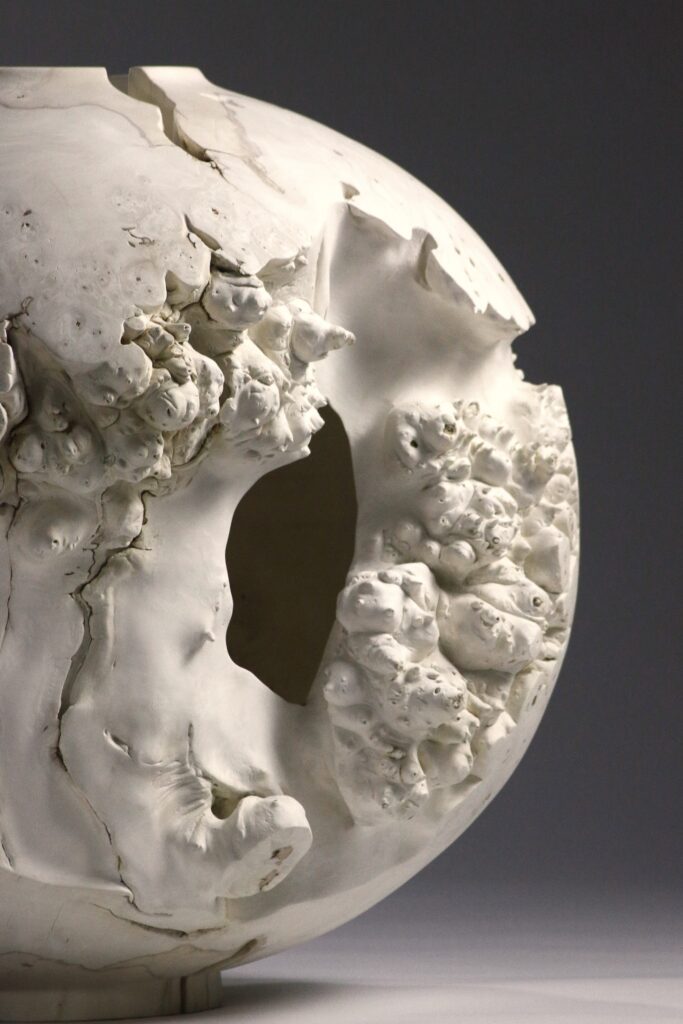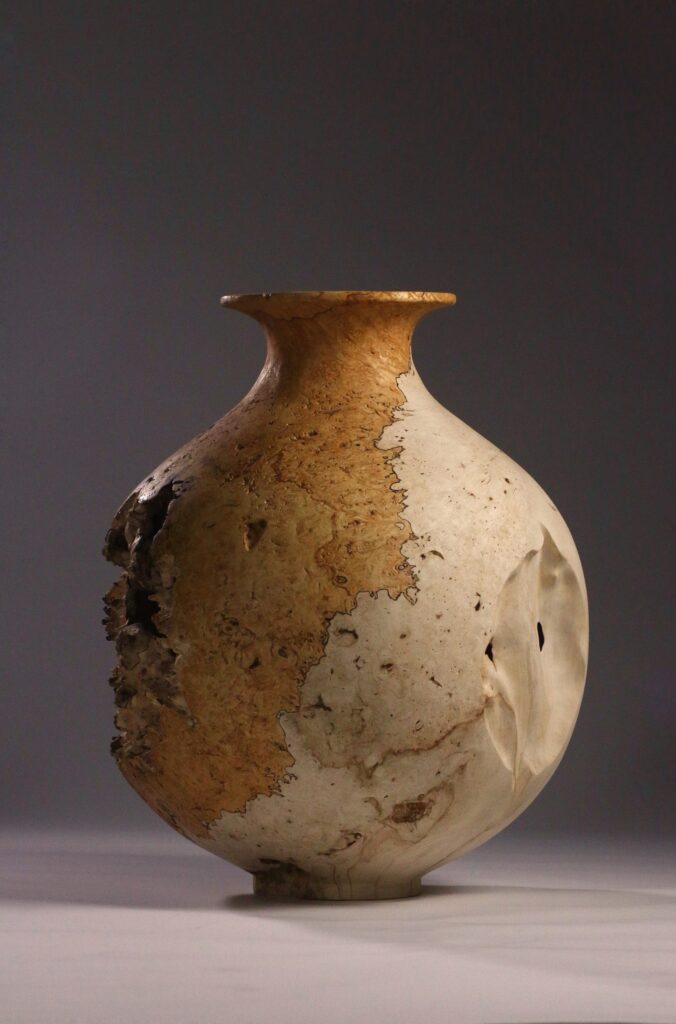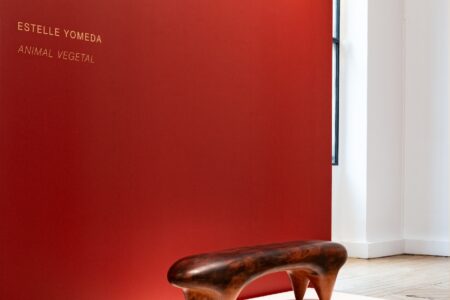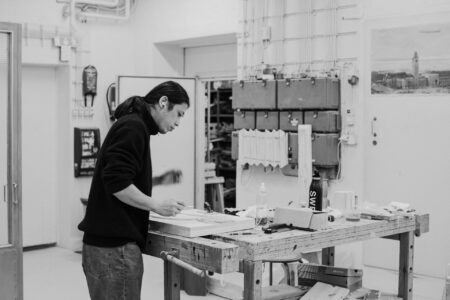
ESSENTIA: Timeless Encounters
Kalpa Galleries presents a selection of British artist Eleanor Lakelin’s contemporary wood sculptures in dialogue with key historic vessels from the Etruscan Museum of Volterra through September 15, 2024.
ESSENTIA: Timeless Encounters, Chapter III, presents the work of Eleanor Lakelin in dialogue with important archaeological vessels from the Etruscan era at the Palazzo dei Priori in Volterra, Italy. Curated by Eleonora Raspi and Fabrizio Burchianti, the exhibition features a group of new artworks in wood from Lakelin’s Time & Texture series, which was made with ebonised sequoia, along with pieces from the Echoes of Amphoras series, made with horse chestnut burr. Alongside these contemporary sculptures is a selection of Hellenistic (III-II BCE.) ceramic vases, amphoras and vessels of different sizes and purposes from the Etruscan Museum’s permanent collection. This is the third and final chapter of the Timeless Encounters exhibition series in which Kalpa Galleries has brought together contemporary makers in conversation with select pieces of ancient art.
ESSENTIA presents a conversation among objects, between old and new, materials and matter. Whether by Lakelin or the unknown Estruscan master, each has worked their material to its essence, creating a new meaning in the vessel that seems to cross time and place. From her studio in the UK, Lakelin transforms naturally felled wood from the region into stunning sculptural objects that reveal the knotty, craggy, earthy layers of the wood as well as its internal beauty. From a smooth, porcelain-like surface to textured blooms of wood, the objects have a regal and statuary presence, but they are decidedly contemporary as well.
Raspi and Burchianti write, “Etruscans believed that amphorae, vases and other containers, in addition to their everyday function, could house in their cavities spirits of all kinds and forms, thus beginning to imbue their artistic artefacts with otherworldly meanings. Lakelin’s works take up this idea and go beyond it, leading the art object to surrender its material integrity, crumbling the surface – the cortex, and allowing the essence to pour out. The form of the vessel thus becomes a portal.”
Founded in the mid-1700s thanks to a donation from the noble abbot Mario Guarnacci, the Museum is one of the oldest and most important Etruscan museums in Italy. The core of the archaeological collection is in the order of 600 Etruscan funerary urns. The production of these objects grew in Volterra between the 4th and 1st centuries BCE using various materials: notably terracotta, stone and alabaster. The most significant urns are made of alabaster, a material that is both easy to shape and suitable for painting.
ESSENTIA: Timeless Encounters is on view at the Palazzo dei Priori in Volterra, Italy through September 15, 2024.
